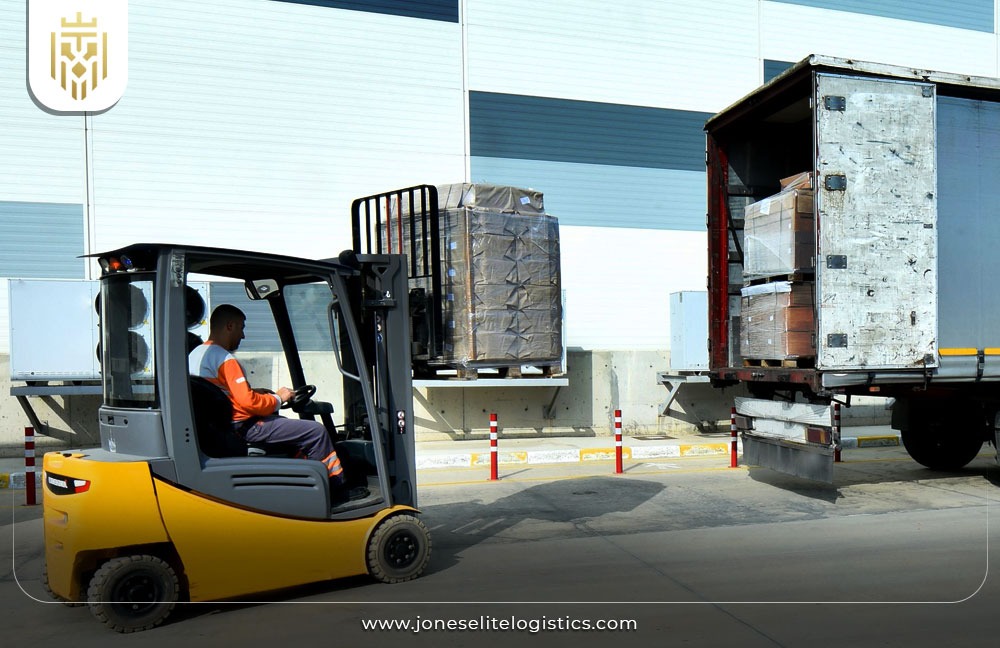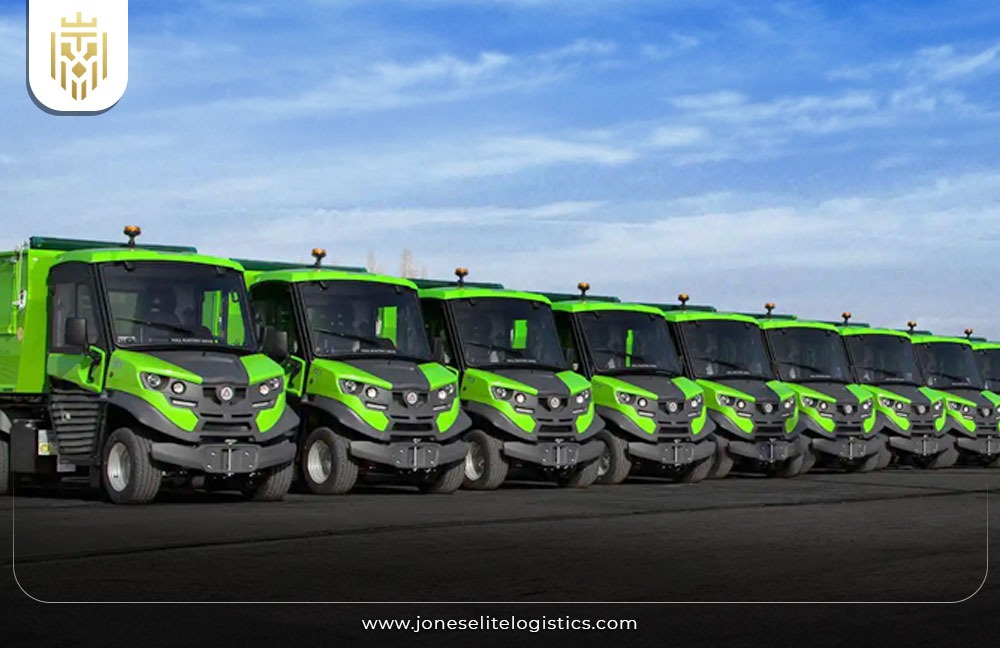What is Milk Run Logistics?
Milk run logistics is a transportation plan where a vehicle follows a predetermined milk run route to pick or drop items, aiming to optimize the milk run method and milk run concept. This approach saves time, cost associated with transportation and time required for milk delivery by consolidating multiple suppliers and stops into a single route. This efficient route ensures shipment is handled in an optimised manner, improving logistics operations while maintaining consistent fulfilment.
How is Milk Run Applied in Logistics?
In logistics, the milk run method is applied by determining numerous pickup and delivery routes through which a particular vehicle should pass through in an orderly manner. By reducing multiple trips and frequent deliveries, it ensures order fulfilment and better inventory management, especially in industries like retail or dairy farms, where milk bottle deliveries are routine. Milk run logistics minimises material handling and fuel consumption, enabling more sustainable logistics practices.
Milk Run Logistics vs. Traditional Logistics:
Unlike traditional logistics, which typically involves single-point deliveries, milk run logistics consolidates deliveries through a milk run route that serves multiple suppliers or stops in one go. This reduces overall transportation costs and fuel consumption by reducing multiple deliveries. The milk run operation enhances efficiency by avoiding multiple deliveries and increasing the shipment volume per route, thereby reducing environmental impact and improving logistics efficiency.
Types of Milk Run Systems:
There are three forms of milk run systems that are adapted to different business needs, focusing on optimising production lines and transport volumes.
Closed Loop Milk Run:
Closed Loop Milk Run delivery method involves circulating in a confined area where the delivery vehicle starts and ends at a particular site such as a warehouse. This fixed route may involve both collection and delivery of goods throughout the day seeing to it that tasks are done on this vehicle before it is returned to the original point. This system is perfect for businesses with stable delivery schedules, such as dairy farms, where multiple milk bottles are picked up and delivered within a fixed area, optimising inventory management and reducing excess shipment handling.

Open Loop Milk Run:
The open loop milk run system covers a broader area, where the route doesn’t return to the starting point. This allows milk run logistics to service multiple suppliers and make multiple stops without having to return to the origin. Ideal for industries with larger geographical coverage, this system provides frequent deliveries of fresh milk to different destinations, helping to streamline order fulfilment.
Milk Run with Cross-Docking:
A milk run operation with cross docking occurs when goods are delivered to a central point and are shipped out to users directly without extensive staging. This delivery method saves time management because products are handled to service multiple suppliers and make multiple stops without having to return to the origin. Ideal for industries with larger geographical coverage, this system provides frequent deliveries to different destinations, helping to streamline order fulfilment.

Benefits of Milk Run Logistics:
Milk run logistics offers various advantages, such as reducing transportation costs, optimising delivery routes, and improving inventory management.
Less Environmental Impact:
Milk Run Logistics reduces the overall flow by bringing several delivery or pickup points into a single route. This approach minimises shipment distances and frequent deliveries, resulting in fewer emissions as a more sustainable option. It is a more efficient utilisation of resources for logistics companies and adds to the environmental goals of these companies.

Efficient Production Strategy:
With regular milk deliveries and optimised delivery routes, milk run logistics supports a just-in-time production process, reducing excess stock in production lines and cutting inventory holding costs. This leads to a more streamlined logistics operation, minimising delays and improving overall production efficiency.
Enhanced Supplier Relationships:
By offering a consistent and efficient route for pickups and deliveries, milk run logistics fosters stronger supplier relationships. With multiple suppliers serviced through the same milk run route, companies enjoy better coordination and more reliable supply chain operations.
Improved Quality Control:
Milk Run Logistics also enables higher quality control because it minimises the number of handling stages and the time taken to transport products. The system ensures that the goods are transported effectively and are received in a better state as compared to other means of transportation hence likely to be less damaged or spoiled. This is especially critical in industries like dairy farms, where maintaining freshness is essential. Fewer touchpoints in the supply chain mean less chance for damage or spoilage of goods like milk bottles.
Disadvantages of Milk Run Logistics:
Milk Run Logistics comes with its set of problems like any other system, and having prior knowledge of them helps those implementing it to deal with them better.
Reduced Flexibility:
Since milk run logistics involves fixed routes and schedules, rapid changes or adaptations to delivery schedules can be challenging. This lack of flexibility might not work for industries requiring quick responses to demand shifts or urgent order fulfilment.
Complex Method To Implement:
The detailed planning required for milk run logistics can make it difficult to implement, particularly in industries with many suppliers or multiple stops. Businesses must invest in route optimization tools, leading to higher initial costs and inventory management complexity.
Additional Costs:
Though Milk Run Logistics can lower total transportation costs although it may require extra expenses for the planning tools and organizational changes. These high upfront costs may a hurdle for small businesses and industries which are cash low and may be disadvantaged when competing with other companies. It also inversely affects small companies that are new when competing with large companies with established logistics infrastructure.
How Effective is the Milk Run Logistics Strategy for 3PL?
For third-party logistics (3PL) providers, milk run logistics offers significant benefits. By optimising routes and consolidating multiple trips, 3PLs can minimize fuel consumption and improve inventory management. Through the milk run method, 3PLs can provide efficient fulfilment to clients, reducing frequent deliveries and enhancing overall logistics operations.
FAQs
1) What is a milk run in logistics?
A milk run in logistics can be described as a transportation method where one vehicle picks up and delivers goods from multiple suppliers along a specific milk run route to reduce transportation costs and optimize deliveries.
2) What are the types of Milk Run?
Depending on the arrangement, milk run logistics can be Closed Loop (return to point of origin), Open Loop which ends at another point or Milk Run with Cross-Docking where products are transferred directly between the incoming and outgoing transportation
3) What are the Benefits of Milk Run Logistics?
Benefits include reduced environmental impact, better inventory control, optimised production lines, and improved supplier relationships and quality control.
4) What are the Disadvantages of Milk Run Logistics?
Little flexibility involved, complex to implement, and such a process may also involve extra costs for route planning and strategy.








